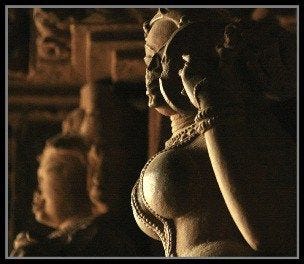Femininity – The Complexity Of Human Sexuality
I wanted to start writing a series of posts on femininity, being feminine and the various aspects of being a woman in Indian society. What better way to start with than discussion first about the factors which determines the sexual identity of a woman (and for that matter a man too).
Most of us are born with a clear gender identity – either male or female. But, a Brown University study concluded that 1.7% of population develop in a way that varies from standard definition of male-female. Inter-sexuality is much more common than Down’s Syndrome or Albinism.
As per Dr Kavita Arora, a psychiatrist, gender is an outcome of four coordinates –
A) GENETIC- Any variation from XX (Female chromosomes) or XY (Male Chromosomes) can cause the variation.
B) BIOLOGICAL/PHYSIOLOGICAL – Estrogen (female hormone), Testosterone (male hormone) determines the sexual characteristic in an individual.
C) SOCIAL CONSTRUCT – It defines gender in terms of feminine and masculine behaviour as expected by the society. (Remember the gender stereotypes we broke in our posts?!!!)
D) INDIVIDUAL AWARENESS OR PSYCHE – The rest three factors can be in sync, but a boy can believe that he really is a girl or vice versa. This is the psyche playing the role.
When all the four coordinates are in sync, you are clearly male or female. But there are cross-connections in development so that even a twitch in any of the four coordinates can lead to some gender diversity. Moreover, sexual development may be interrupted at any point along the way from conception to adulthood, leading to range of sexualities. (A useful article, if you want to read more about this).
Phew! that was complicated! We do not even realise how easily we choose, or rather got our sexual identity, but for the ones, who due to any of the four factors mentioned above have a confused identity, life is difficult for them.
All this suddenly came out to the fore when India’s Santhi Soundarajan and South Africa’s Caster Semenya, both top athletes, failed the gender test in 2006 and 2009 respectively in International sporting events. During tests, their testosterone level were found higher than an average women, and so they both were banned from world sports, questioning their gender. Later the SA athlete has been allowed to participate as a woman, but the fate of Santhi is still undecided.
Santhi supposedly suffers from Androgen Insensitivity Syndrome (AIS), having high testosterone, but her gender has been questioned. Although, she asserted her gender identity with dignity, but this questioning and the ban caused her serious embarrassment, which even drove her to attempt suicide.
This and many more issues affect the lives of women all around the world. I shall be writing about all the good, bad and ugly issues, the talked about and the not-so talked about issues in my forthcoming posts. Coming up next in the series is “Live-In Relationships”.
Picture above of “Beautiful Girl of Khajuraho” by Victor Guntin (Copyright of the Photographer)




